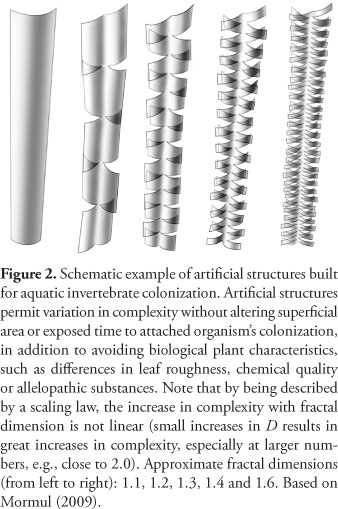Aquatic macrophytes play an important role in structuring communities in aquatic environments. These plants provide physical structure, increase habitat complexity and heterogeneity and affect various organisms like invertebrates, fishes and waterbirds. The complexity provided by macrophytes has been exhaustively studied in aquatic environments. However, macrophyte complexity has rarely been measured in a standardized fashion, making comparisons among different studies and the establishment of general conclusions difficult. To address this issue, this review is focused on questions related to the habitat structural complexity provided by these plants, exploring: i) how complexity has been viewed by ecologists, with an emphasis on macrophyte studies; ii) the pros and cons of several methods used to quantify plant complexity; iii) the consequences of habitat structuring by macrophytes on invertebrates and fish and possible causes, mediated by habitat complexity, that lead to changes in these animal assemblages; iv) potential impacts of non-native macrophyte species on habitat complexity and v) the importance of complexity provided by macrophytes to management strategies for maintaining aquatic biodiversity. We examined literature produced in both temperate and tropical regions, but prioritized the latter. We found a great variety of habitat complexity measurements that are applied to aquatic macrophytes to understand their influence on attached animal assemblages. A lack of standardization (considering the wide range of techniques and scales of resolution used) limits comparisons between different studies exploring this subject, in which biological samples and physical substrates were used to explore these relationships. Macrophytes affect animal assemblages and promote biodiversity through a chain of mechanisms, related to habitat complexity, that involve the availability of shelter and feeding sites. Invasive macrophyte species may modify habitat structure and thus influence associated organisms. In this sense, they are suitable as the main focus of management strategies aimed at biodiversity restoration and conservation.
aquatic vegetation; invasive species; diversity; habitat heterogeneity






